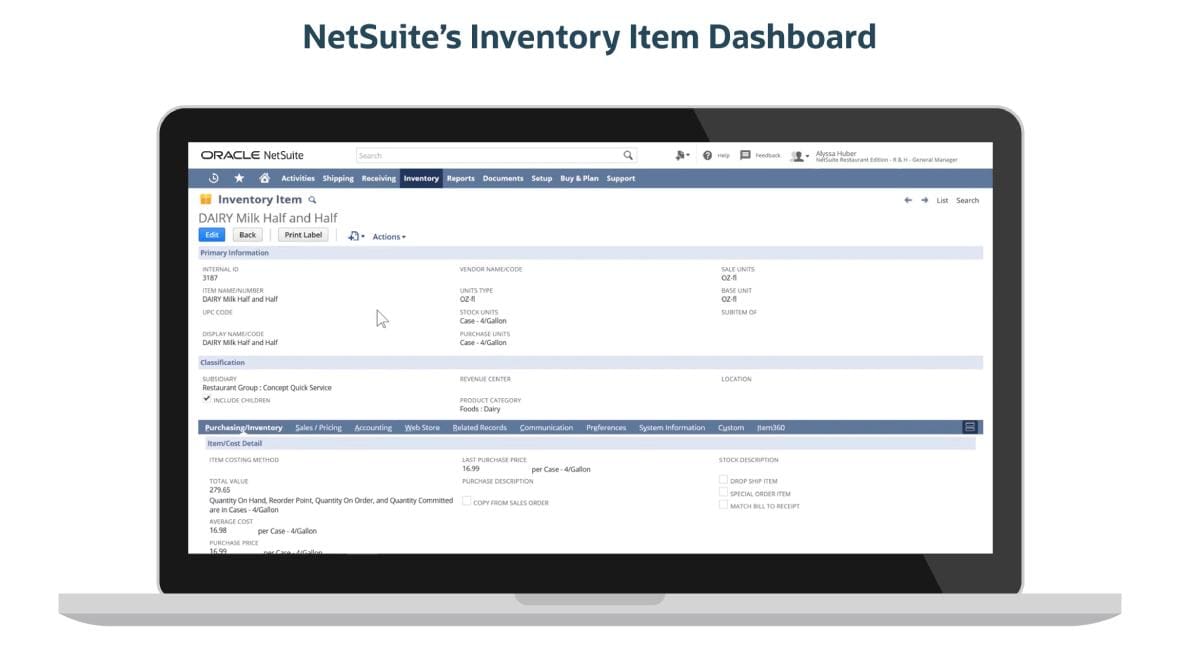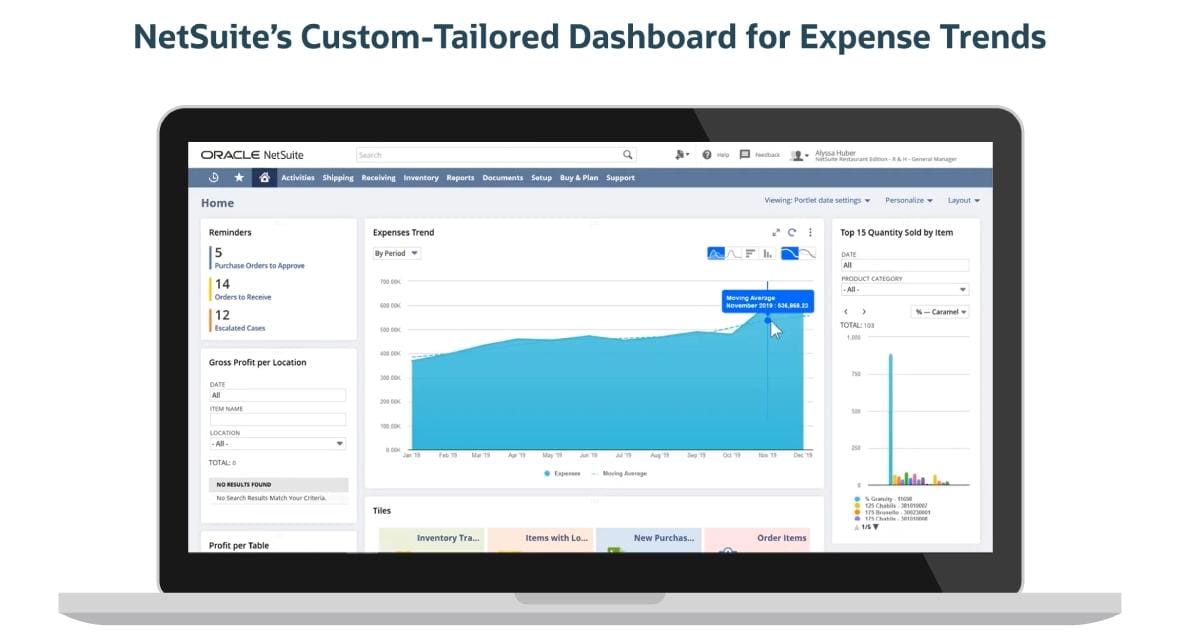Many restaurants today are grappling with rising costs and flat sales. Good luck turning those numbers into profits. Ratcheting up the stakes are supply chain challenges, such as transportation bottlenecks, labor strikes, and random food shortages. This article examines those and other challenges and how restaurants are addressing them.
What Are Restaurant Supply Chain Issues?
More than three-quarters of the restaurant managers who took part in the US National Restaurant Association’s 2024 State of the Restaurant Industry survey said they experienced disrupting delays in ordering food supplies in 2023, leading to shortages, while over half reported similar issues when ordering equipment and service items. Supply chain issues drove more than half of survey respondents to change their menu offerings.
Supply chain disruptions have abated since the COVID-19 pandemic, but subsequent issues have emerged. For example, the avian flu slashed supplies of chicken, while Indonesia’s ban on palm oil exports and blighted olive groves in Italy led to a shortage of cooking oils. Climate change continues to threaten supplies as coffee, while extreme weather events worldwide have curtailed supplies and delayed shipments of all kinds of restaurant goods.
Another ongoing issue is the inefficiency of restaurant supply chains. For example, working with multiple suppliers of numerous ingredients can complicate ordering. Compounding these top-level concerns are restaurants’ proprietary front- and back-of-house issues, including unpredictable customer demand, gaps in inventory management, and limited supply chain expertise.
Key Takeaways
- Restaurant supply chains are hampered by disruptions and inefficiencies.
- The impact of supply chain issues on restaurants’ typically thin profit margins can be crippling.
- Rising to the challenge, restaurants are rearming with better digital supply chain management tools.
Restaurants and Supply Chain Issues Explained
While restaurants face supply chain challenges common with many types of businesses, such as unreliability and inefficiency, restaurateurs must also contend with unique risks, including the shelf life and seasonality of the food they buy. As a result, restaurants must take more of a just-in-time approach to supply chain management, moving toward maintaining just-in-case inventory amid increasing disruptions.
Food supply chains can also be particularly complex. Depending on their size and type, restaurants may regularly buy dozens to hundreds of ingredients from farmers, manufacturers, distributors, and other local, national, and international suppliers. Their list of suppliers can change with the seasons as crops turn or customers favor light summer or hearty winter fare. They must maintain additional supplier relationships for everything from dining room decor to kitchen equipment, uniforms, and packaging. Some restaurants have added alternative suppliers of key products to minimize risk, but this approach also adds complexity.
Importance of an Efficient Supply Chain for Restaurants
A lot rides on a restaurant’s ability to manage its supply chain:—cost, safety, quality, and consistency—all of which determine bigger-picture outcomes such as customer loyalty, brand reputation, and profitability. Food waste presents an important case in point. When food goes bad, restaurants lose not only the value of the ingredient, but also related opportunity costs and expenses incurred to transport, store, and dispose of it. In a recent survey by a kitchen equipment supplier, about one-third of US restaurants said they lose $200 to $300 per week due to food waste, and another third said they lose more. Clearly, the waste adds up enough over time to take a significant bite out of their operating budgets.
Spoilage may occur when food that is vulnerable to temperature changes is improperly packaged and refrigerated while in transport or storage. Or it can happen simply when inventory exceeds customer demand. According to the 2024 Restaurant Technology Outlook survey from Nation’s Restaurant News (NRN), reducing food waste is the top driver for kitchen managers to use inventory management systems.
Efficient supply chain management can help restaurants avoid these issues, as well as provide customers with fresher ingredients and more creative menu options.
How Supply Chain Challenges Affect the Restaurant Industry
There’s little margin for error on restaurants’ income statements. Restaurateurs must be aware of the following supply chain challenges and be ready to address them at any given moment.
Rising Ingredient Prices
Three-quarters of restaurant managers said their average food costs were higher in 2023 than in 2022, according to the NRA survey. The operative word in that sentence may well be “average,” as climate change and other natural and economic events increasingly cause spikes in the prices of key ingredients.
A Wells Fargo report on commodities for the second quarter of 2024 presented the latest price mosaic in the ever-shifting global market for various ingredients. Coffee traded higher, for example, while the price of sugar dropped from historic highs. Frozen-seafood prices experienced “long-needed deflation,” the report said, while berries cost more. Restaurant managers need to stay on top of trends like these and put contingencies in place, as described later in this article.
Higher Transportation and Logistics Expenses
The cost of ingredients is just one factor in food price volatility. The costs of transporting and warehousing both perishable and dry goods also add up. In the US, for example, shipping rates can surge up to one-third higher in the spring and summer for refrigerated trucks hauling produce. Additionally, rising demand has driven warehousing and storage prices to all-time highs in 2024, according to the US Federal Reserve. Internationally, reports attribute a surge in ocean and air freight prices on recurring attacks on shipping vessels in the Middle East and a drought around the Panama Canal.
Restaurant suppliers primarily handle logistical arrangements, though restaurant managers need to communicate closely with them on scheduling and pricing. Understanding what’s driving price changes can put managers in a better position to handle supplier relationships. Subscription-based price intelligence tools can help, though they may be too expensive for smaller restaurants.
Unavailability of Key Ingredients
Eggs go into everything from fried chicken to cakes to meatballs, making them a fundamental ingredient in restaurant kitchens. In mid-2024, the US Department of Agriculture was tracking an alarming avian flu outbreak that threatened egg production and was spreading to dairy cows. Resulting shortages drove up costs.
Restaurant managers may also face delays, stockouts, and backorders related to a supplier’s operational shortcomings. And they must keep an eye on the bigger picture, staying alert for major crop failures and other developments in today’s volatile global food system. Tips to for mitigating these risks include ordering early, diversifying suppliers, and building closer communications and relationships with new and existing vendors.
Inventory Management Challenges
Restaurant managers also face challenges with internal processes, including inventory management. Restaurants need to maintain optimal stock levels, ensuring that they can fulfill customer demand without incurring spoilage or waste due to excess inventory.
Achieving this balance can turn into an ongoing contest between uncertain, fluctuating customer demand and the short shelf life of many ingredients. Inventory management systems can automate ordering, and integration with point-of-sale (POS) systems provides greater accuracy for demand forecasting. However, setting up and running IT systems can prove difficult for restaurant staffers with limited skills or interest in technology.
Menu Modifications
It’s a fact of restaurant life: Customers are always asking for menu modifications, in part to accommodate their dietary, religious, and taste preferences, which can cause a ripple effect extending to the supply chain. Some restaurants discourage modifications, while others list available menu alternatives, such as gluten-free, vegan, heart-healthy, and kosher. Restaurants need to strike a balance. From a sales perspective, adopting a simple “no substitutions” policy can turn off customers. But behind the scenes, excessive modifications can disrupt ordering patterns, stock levels, and efforts to control costs.
Increased Workload for Staff
Staff retention and labor costs rank among restaurants’ biggest challenges. In the NRA survey 45% of managers said they need more employees to support customer demand, while 70% had job openings that were hard to fill—one of which is the role of restaurant supply chain manager.
Old-school, manual supply chain management techniques create a significant workload for staff, and the burden is increasing amid supply disruptions and shortages and growing supply chain complexity. Many supply chains are becoming more automated—for instance, by integrating cloud-based POS systems with inventory management software to forecast demand and trigger orders when stocks are low. Yet about one-third of restaurant managers report that they lack staff with the technological skills to run such a system, according to NRN’s Restaurant Technology Outlook report. Technology vendors, for their part, are working to make these systems easier to install, integrate, and operate.
Quality and Consistency Issues
Supply chain issues can make it difficult for restaurants to maintain quality and consistency, two brand essentials. A restaurant manager may have to find lower-cost ingredients amid rising prices or start juggling multiple supplier relationships to avoid disruption and delay. Rather than sacrifice consistency, a best practice involves creating supplier arrangements for ingredients that are tested and proven to produce the same flavor, texture, and aroma, no matter the number of plants or farms involved.
When it comes to quality, keep in mind that suppliers face many of the same cost pressures and transportation system problems that restaurants do. So it’s worth redoubling efforts to develop close supplier relationships and quickly work together to address any slippage in ingredient quality.
Longer Wait Times and Reduced Service Quality
Restaurants simply can’t afford to work with suppliers that miss deliveries, are unresponsive to communications, and make lots of order-processing errors.
To stave off service issues and delays, supplier relationship management (SRM) systems on shared digital platforms have become de rigueur for automating and streamlining orders and deliveries. SRM software can reinforce a mutual understanding of key performance indicators (KPIs), such as timeliness; display vendor scorecards on achieving KPIs; and include feedback mechanisms for addressing any deficiencies. By enabling suppliers and restaurants to upload information to the same portal, SRM systems can provide a stronger foundation for overall communications.
Revenue Loss and Reduced Profit Margins
NRA reports that inflation-adjusted restaurant sales were down slightly in mid-2024, despite increases in menu prices to cover costs. Nearly one in four restaurant operators said they were unprofitable in 2023. To some observers, higher menu prices may, in fact, be part of the problem. As one CNN headline put it: “Surging Restaurant Prices Are Making Dining Out a Luxury.”
Some industry observers note that there’s a fine line between recouping costs and deterring customers, adding that restaurants have little, if any, room for further increases. One in five restaurant managers agree, according to NRN’s recent State of Independent Restaurants report, saying they no longer have any pricing power.
How Restaurants Can Navigate Supply Chain Challenges
Supply chain best practices have been rapidly evolving across all industries since the pandemic began. Restaurants should consider the following proven supply chain management approaches to help them navigate the challenges that will inevitably arise.
1. Local Sourcing
Local sourcing takes on two meanings when it comes to restaurant supply chains. One definition speaks to the wider trend to minimize global disruptions by sourcing more raw materials and components closer to home. The other applies to the current popularity of local, farm-to-table menu items in restaurants.
2. Flexible Menus
Independent restaurants and small restaurant groups have one advantage over franchises and chains: more flexible menus. And now that so many establishments rely solely on digital menus, the days of fixed, printed menus are numbered. The implications for a restaurant’s supply chain can be profound, as flexible menus enable more leeway in ordering. That is, if chicken suddenly becomes more affordable than other ingredients, the restaurant can update the menu with two or three new chicken dishes. Additionally, flexible menus alleviate some of the stress surrounding stockouts—if something runs out, update the menu. Menu management software can help, with features that rapidly set and reset items, specials, and prices.
3. Diversified Suppliers
Higher food costs drove 60% of restaurant managers to shop around for other suppliers in 2023, according to NRA. Still, every restaurant should carefully weigh the pros of diversifying suppliers against the cons. Against diversifying is the fact that creating a deep engagement with a primary distributor can help restaurants avoid some supply chain management headaches. Working with a small number of suppliers can also yield volume discounts and engender collaborative problem-solving of operational challenges that arise.
On the other hand, diversifying suppliers helps lower the risk of supply chain disruptions. Another potential benefit of this approach is the availability of more competitive pricing options for a wider variety of ingredients. SRM software can facilitate supplier diversity, with features that support onboarding and performance evaluation.
4. Inventory Management
In yet another industry survey, over half of restaurants said they had lowered their cost of goods sold by improving their inventory management and tracking key ingredients. Being more on top of the situation, including through use of inventory management software, enabled managers to quickly identify and address costly issues, such as spoilage and supplier errors. Meanwhile, about half of restaurant managers surveyed by NRA said they were planning to invest in inventory management systems in 2024, making these systems one of their top five technology investment priorities.

5. Alternative Ingredients
Chefs can help navigate around supply chain issues, such as ingredient shortages, delays, and price hikes, by altering their recipes. For instance, should a rice shortage arise, as happened in late 2023, a rice-heavy menu could be modified to also offer quinoa or cauliflower rice. Substitutions should be communicated to customers.
6. Collaboration and Sharing
Supplier relationships should rise above the merely transactional to become collaborative to ensure better planning and execution on both sides. Restaurants can share sales forecasts with their suppliers, while suppliers provide early warnings of potential shortages and price increases. Beyond problem-solving, restaurants and their suppliers can engage in joint marketing and collaborative menu development. Digital platforms for ordering and supplier relationship management can facilitate collaboration, providing a “single version of truth” about the status of any given order in real time on a shared portal.
7. Sustainability Practices
Restaurants produce a lot of waste, including food and packaging. The good news, according to NRA, is that for every dollar restaurants invest in reducing food waste, they could cut about $8 in costs. Reducing portion sizes could also cut down on how much food customers leave on their plate, contributing to lower food acquisition and disposal costs.
Reducing food waste starts with tracking it. NRA reports that nearly four in 10 restaurants increased this activity in 2023. NRA advises restaurants to conduct an audit to establish their food-waste baseline, then track the weight, type, and source of food waste to inform improvements. Better demand planning can also help reduce waste. Add bonus points for sourcing sustainably grown or produced goods and for composting.
8. Customer Communication
Regular communications with customers to find out what they want, and when and how much they want, helps restaurants with their demand planning. Restaurants can do that on social media, in surveys, on review sites—or just by talking with them in person.
Communications can also help manage customers’ expectations amid shortages or price changes. Restaurants may need to redouble their communication efforts with real-time updates on social media or emails.
9. Technological Innovations
Restaurants are using technologies as advanced as artificial intelligence to enhance supply chain operations. For example, restaurant IT systems equipped with AI can help restaurants predict demand, monitor supply, and automate purchase orders by analyzing seasonality, customer preferences, menu plans, freshness dates, and other factors. Linking POS systems rich with demand data to inventory management systems primed to fill that demand can improve supply chain precision and efficiency.
10. Menu Engineering
Menu engineering takes menu flexibility to the next level. This strategy plots the sales and profitability of menu items on an ongoing basis to inform important decisions on repricing, modifying, resizing, or removing those culinary items. Its importance is growing at a time of volatile pricing and shortages. More than half of restaurant managers took items off their menu in 2023 because of high food costs, according to NRA’s report.
How NetSuite Helps Restaurants Weather Supply Chain Challenges
NetSuite’s cloud-based application, that includes enterprise resource planning (ERP), vendor management, inventory management, and accounting software, can help restaurants manage their complex supply chains. NetSuite also delivers lightweight restaurant software that helps franchisors, restaurants, and hospitality groups drive revenue and reduce costs. Restaurants can add the POS, commissary, franchise management, and other functionality they need to meet their changing business needs.

As restaurants face rising costs, supply disruptions, and evolving customer expectations, those who can effectively balance supply chain efficiency, quality, and sustainability are best positioned to thrive.
#1 Cloud ERP
Software
Restaurants and Supply Chain Issue FAQs
Why are restaurants having supply chain issues?
Restaurant supply chains are notoriously challenging. Restaurants must manage the limited shelf life and seasonality of food. Complexity is another issue. Restaurants may regularly buy dozens to hundreds of ingredients from farmers, manufacturers, distributors, and other local, national, and international suppliers. Their list of suppliers can change with the seasons. Furthermore, supplier relationships must be maintained to deliver everything from ingredients to kitchen equipment and packaging.
What are the problems with the food supply chain?
Climate change, geopolitical conflicts, labor shortages, and other factors can contribute to spot food shortages and drive up prices, hindering operations.
What are the supply chain issues in the hospitality industry?
The two main supply chain issues in the hospitality industry are supply disruptions and supply chain inefficiencies.
Why are restaurants struggling right now?
Many restaurants are navigating rising costs amid flat sales. Careful planning and strategic sourcing can help overcome these hurdles.









